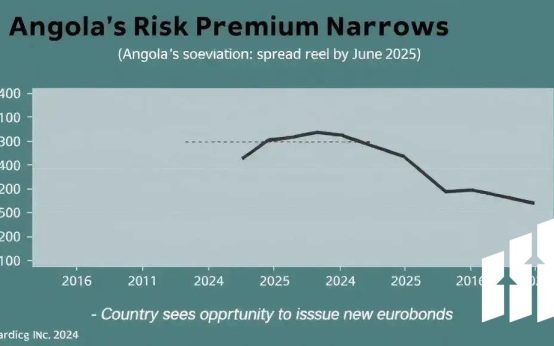A treasury bond is a long-term U.S. government debt security that pays fixed interest semiannually, offering low risk, tax advantages, and a reliable income stream for investors seeking safety and steady returns.
What is a treasury bond and how to invest in it are questions that pop up for many curious investors. With a mix of safety and steady returns, treasury bonds attract those looking to diversify. Ever wondered if this could be your next smart move?
understanding treasury bonds: basics and benefits
Treasury bonds are long-term debt securities issued by the U.S. government to finance its spending. When you buy a treasury bond, you are essentially lending money to the government for a fixed period, typically 10 to 30 years. In return, the government pays you interest, usually every six months, until the bond matures. At maturity, you receive the original amount you invested.
Key features of treasury bonds
Safety: Treasury bonds are backed by the full faith and credit of the U.S. government, making them one of the safest investments available. They carry minimal risk of default.
Fixed interest payments: The interest rate is set when you buy the bond, so you receive steady income over time. This can provide predictable cash flow for your portfolio.
Long duration: Since bonds have maturities of 10 years or more, they are suited for investors with a long-term horizon aiming for stable returns over time.
Benefits of investing in treasury bonds
Treasury bonds offer stability during economic uncertainty and can help balance riskier assets like stocks. They are highly liquid and can be sold before maturity in secondary markets. Additionally, interest income from treasury bonds is exempt from state and local taxes, increasing their attractiveness for tax-conscious investors.
Portfolio diversification: Including treasury bonds in your investment mix can reduce overall portfolio volatility due to their low correlation with stocks.
Predictable income: Regular coupon payments provide a reliable income stream, which can be especially valuable for retirees or conservative investors.
how treasury bonds work: yields, durations, and risks

Treasury bonds pay a fixed interest rate, known as the coupon rate, which determines the periodic payments you receive. These payments are usually paid semiannually and remain constant throughout the life of the bond. The yield is a key concept that represents the actual return on investment, factoring in the bond’s price changes in the market.
Understanding yield types
The current yield is the annual coupon payment divided by the bond’s current market price, which fluctuates based on supply and demand. The yield to maturity (YTM) estimates the total return if you hold the bond until it matures, including all interest payments and any gain or loss from buying the bond at a discount or premium.
Duration and its importance
Duration measures how sensitive a bond’s price is to changes in interest rates. Bonds with longer durations are more affected by interest rate changes, which can cause their prices to rise or fall more. Knowing the duration helps investors balance the risk associated with interest rate fluctuations.
Risks involved in treasury bonds
Although treasury bonds are considered very safe, they carry some risks. Interest rate risk means bond prices drop when interest rates rise, potentially causing losses if you sell before maturity. Inflation risk is another concern, as inflation can erode the purchasing power of fixed interest payments over time. Finally, reinvestment risk occurs when interest payments or principal are reinvested at lower rates than the original bond.
steps to start investing in treasury bonds
To begin investing in treasury bonds, start by opening a brokerage account or an account directly with the U.S. Department of the Treasury through its website, TreasuryDirect.gov. This platform allows individuals to buy treasury securities easily and securely without middlemen.
Choosing the right treasury bond
Identify your investment goals and time horizon. Treasury bonds offer various maturities, usually from 10 to 30 years. Selecting the right term depends on your financial plan and need for liquidity.
Making your purchase
You can participate in treasury bond auctions where new bonds are issued, or buy existing ones on the secondary market through brokers. Auctions often offer bonds at face value, while the secondary market prices may fluctuate based on interest rates.
Monitoring and managing your investment
Keep track of your bond’s interest payments and market value. Knowing when your bond matures is crucial for reinvesting or withdrawing your funds. Many investors reinvest the interest payments or use them for steady income.
Tax considerations include that interest from treasury bonds is exempt from state and local taxes, but subject to federal income tax. Be sure to consider these aspects when planning your investment strategy.
comparing treasury bonds with other fixed-income investments

Treasury bonds are often compared to other fixed-income investments like corporate bonds, municipal bonds, and certificates of deposit (CDs). One of the biggest advantages of treasury bonds is their guaranteed safety, as they are backed by the U.S. government, which significantly lowers default risk compared to corporate or municipal bonds.
Risk and return comparison
Corporate bonds usually offer higher yields to compensate for greater credit risk. Municipal bonds can provide tax advantages, especially for residents of the issuing state. Treasury bonds tend to have lower yields but offer reliability and liquidity.
Liquidity and market accessibility
Treasury bonds are highly liquid, meaning they can be easily sold on the secondary market with minimal price impact. CDs often require holding until maturity or paying penalties for early withdrawal, making treasury bonds more flexible in this sense.
Tax treatment differences
An important benefit of treasury bonds is that the interest income is exempt from state and local taxes, though it is still subject to federal taxes. Municipal bonds may be exempt from federal and sometimes state taxes, making them attractive in certain tax situations.
Investment goals also play a role: treasury bonds suit conservative investors seeking steady income and low risk, while corporate bonds or CDs might appeal to those willing to accept more risk for potentially higher returns.
tips to manage and optimize your treasury bond portfolio
Managing a treasury bond portfolio effectively requires monitoring market conditions and aligning investments with your financial goals. Regularly review your portfolio to ensure it maintains the desired diversification and risk level.
Rebalancing your portfolio
Over time, the value of your bonds and other assets may change, leading to an imbalance. Rebalancing involves adjusting your holdings to maintain your target allocation, which helps control risk and optimize returns.
Considering laddering strategies
Bond laddering means buying bonds that mature at different times. This strategy provides a steady income stream and flexibility to reinvest as bonds mature, helping to manage interest rate risk.
Staying informed on interest rates
Interest rate changes impact bond prices. Keep an eye on economic indicators and Federal Reserve policies to anticipate shifts. Understanding how rates affect bond prices helps in timing your buy or sell decisions.
Tax planning is essential since treasury bond interest is taxable at the federal level. Work with a tax advisor to optimize your tax situation and incorporate bonds strategically within tax-advantaged accounts if possible.
Wrapping up treasury bonds and investing wisely
Treasury bonds offer a safe and reliable way to earn steady income while protecting your investment. Understanding how they work, the risks involved, and how to invest smartly can empower you to build a stronger financial future.
By comparing treasury bonds with other options and managing your portfolio carefully, you can make informed choices that fit your goals. Remember to stay informed and adjust your strategies as needed to get the most from your investments.
With a thoughtful approach, treasury bonds can be a valuable part of your financial plan, helping you achieve stability and growth over time.
FAQ – common questions about treasury bonds and investing
What is a treasury bond?
A treasury bond is a long-term debt security issued by the U.S. government, offering fixed interest payments until maturity.
How do I buy treasury bonds?
You can buy treasury bonds through TreasuryDirect.gov or via brokerage accounts, either at auctions or in the secondary market.
Are treasury bonds safe investments?
Yes, treasury bonds are considered very safe as they are backed by the full faith and credit of the U.S. government.
What risks should I be aware of when investing in treasury bonds?
Key risks include interest rate risk, inflation risk, and reinvestment risk, which can affect bond prices and returns.
Can I sell treasury bonds before they mature?
Yes, treasury bonds are liquid and can be sold in the secondary market before maturity, although their price may vary.
How do treasury bonds compare to other fixed-income options?
Treasury bonds offer lower risk and tax benefits compared to corporate or municipal bonds but generally have lower yields.


 Miran Highlights Dual Goals of Fed and Interest Rate Outlook
Miran Highlights Dual Goals of Fed and Interest Rate Outlook  Are You a Robot? Unusual Activity Detected on Bloomberg
Are You a Robot? Unusual Activity Detected on Bloomberg  Keir Starmer Leads Business Delegation to India for Trade Pact
Keir Starmer Leads Business Delegation to India for Trade Pact  Takaichi Appoints Ex-Finance Minister as Secretary General of LDP
Takaichi Appoints Ex-Finance Minister as Secretary General of LDP  Argentina Continues Dollar Sales Amid Weakened Peso Crisis
Argentina Continues Dollar Sales Amid Weakened Peso Crisis  White House Calls on Democrats to Resolve Ongoing Government Shutdown
White House Calls on Democrats to Resolve Ongoing Government Shutdown